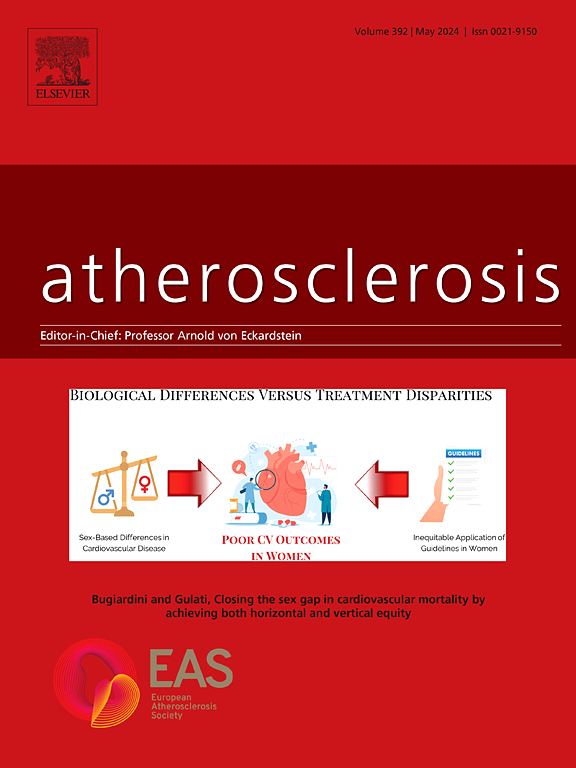Discordance analyses comparing LDL cholesterol, Non-HDL cholesterol, and apolipoprotein B for cardiovascular risk estimation
IF 4.9
2区 医学
Q1 CARDIAC & CARDIOVASCULAR SYSTEMS
引用次数: 0
Abstract
For decades, studies have tried to identify the cholesterol marker that best reflects risk of atherosclerotic cardiovascular disease(ASCVD). Comparing low-density-lipoprotein(LDL) cholesterol, non-high-density-lipoprotein(non-HDL) cholesterol, and apolipoprotein B(apoB) as ASCVD risk markers has been challenged by high correlation between them. Thus, discordance analyses, directly addressing disagreements between the cholesterol markers, have emerged. Approaches adopted to define discordance originate in one of three methods: discordance by cut-points, discordance by percentiles, or discordance by residuals. Commonly, concordant lipid levels serve as reference examining the association between discordant lipid levels with risk of ASCVD. Importantly, concordant reference groups present heterogeneity of clinical relevance across different discordance methods as concordant low lipid levels associate with lowest ASCVD risk while concordant high lipid levels associate with highest risk. Thus, results from different discordance approaches cannot be directly compared. Moreover, discordance between cholesterol markers is more frequently seen in individuals treated with lipid-lowering medication than in individuals not treated with lipid-lowering medication. Accordingly, studies performing discordance analyses have reported inconsistent and even conflicting results. Discordance by cut-points appears the most intuitive and clinically applicable method; results from these analyses suggest that elevated LDL cholesterol, non-HDL cholesterol, or apoB levels in individuals not treated with lipid-lowering medication confer increased ASCVD risk while in individuals treated with lipid-lowering medication, elevated non-HDL cholesterol and apoB levels best indicate residual risk. Results from discordance analyses comparing LDL cholesterol, non-HDL cholesterol, and apoB in risk of ASCVD as well as complexities of discordance analyses and considerations regarding interpretations are discussed in this review.

求助全文
约1分钟内获得全文
求助全文
来源期刊

Atherosclerosis
医学-外周血管病
CiteScore
9.80
自引率
3.80%
发文量
1269
审稿时长
36 days
期刊介绍:
Atherosclerosis has an open access mirror journal Atherosclerosis: X, sharing the same aims and scope, editorial team, submission system and rigorous peer review.
Atherosclerosis brings together, from all sources, papers concerned with investigation on atherosclerosis, its risk factors and clinical manifestations. Atherosclerosis covers basic and translational, clinical and population research approaches to arterial and vascular biology and disease, as well as their risk factors including: disturbances of lipid and lipoprotein metabolism, diabetes and hypertension, thrombosis, and inflammation. The Editors are interested in original or review papers dealing with the pathogenesis, environmental, genetic and epigenetic basis, diagnosis or treatment of atherosclerosis and related diseases as well as their risk factors.
 求助内容:
求助内容: 应助结果提醒方式:
应助结果提醒方式:


